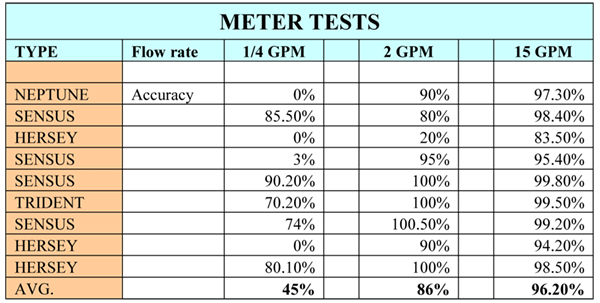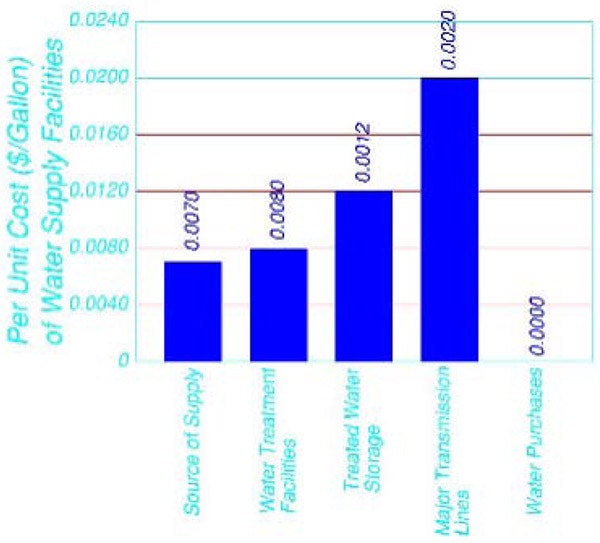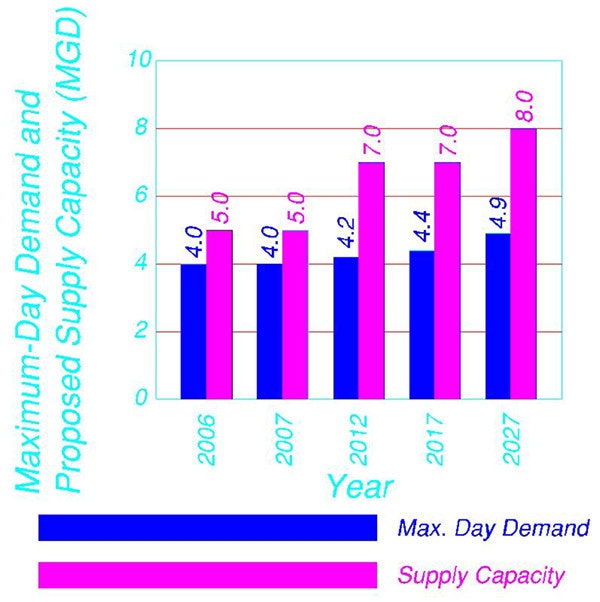Profile Proposed Facilities
3.1 Facility Needs
In 2005, the St. Charles Mesa Water District developed a Long Range Capital Improvement Plan, and it is attached in the folder at the end of this report. The proposed improvements contained therein are a comprehensive needs list, and not all of the items are directly related to water use, or conservation. However, the majority of the costs associated are directly relevant to providing additional raw, or treated water, increased storage and distribution capacity. In addition, one of the main areas of concern is non-revenue water. That is, treated water, which is utilized by the customer, but which is not being properly metered, and therefore, not being paid for, by the customer. It is believed that this is due to inaccurate metering due to deterioration in the individual meters themselves. Many of the original water meters, which were installed in the early 1970’s, are still in use today. Recently, a sample of these meters were replaced with radio read meters. The old meters were tested by the District, yielding the following results:

As can be seen from the test results, some of the low flows do not even register on 3 of the old meters. The moderate flows are off by an average of 14% (low), while the high flows are still relatively accurate.
Currently, and for the foreseeable future, the District has an abundance of raw water, in the form of senior surface water rights, wells, raw water storage and project water. However, the existing well sources will be taken out of service at some point in the future. This is particularly true if the majority of the shares in the Bessemer Ditch are sold. This is due to the fact that the seepage from the unlined irrigation ditch is tributary to the existing wells, and the wells are only utilized when the ditch is flowing.
The District intends to add 2 Million Gallons per Day (MGD) capacity to its main treatment plant, in 2012. In addition, they intend to add 1 MGD capacity to their secondary plant in the year 2020. This will give a total treatment capacity of 8 MGD in 2020, an increase of 3.0 MDG.
Additional upgrades in pumping and distribution are planned through the year 2025, which are intended to provide additional capacity and higher system pressure. At present, there are three small sanitation districts which provide sanitary sewer service to customers in the St. Charles Mesa Water District. They are:
- St. Charles Mesa Sanitation District
- Salt Creek Sanitation District
- Blende Sanitation District
In total, the 3 districts presently serve 430 customers. No additional service is anticipated by any of these entities.
The vast majority of the residences and businesses located in the District’s service boundary are presently utilizing Individual Sewage Disposal Systems (ISDS) consisting of a septic tank and leach field. The fact that no further sanitary sewer service is anticipated has tended to limit dense development, particularly for the future, as the minimum lot size required for ISDS systems has increased to 30,000 square feet minimum.
3.2 Incremental Cost Analysis
The following is a summary of the per unit costs ($/Gallon) associated with the various planned supply-side capacity improvements:

3.3 Preliminary Capacity and Costs Forecasts
It is projected, in Worksheet 2-1, that the Maximum-Day demand in the year 2017, shall be 4.4 Million Gallons per Day (MGD); and in the year 2027 the Maximum-Day demand shall be 4.9 MGD. Accordingly, the District intends to upgrade its overall treatment capacity by 2 MGD in the year 2012, and an additional 1 MGD in 2020. The following is a summary of the projected Maximum-Day demand and the proposed total treatment capacity:

